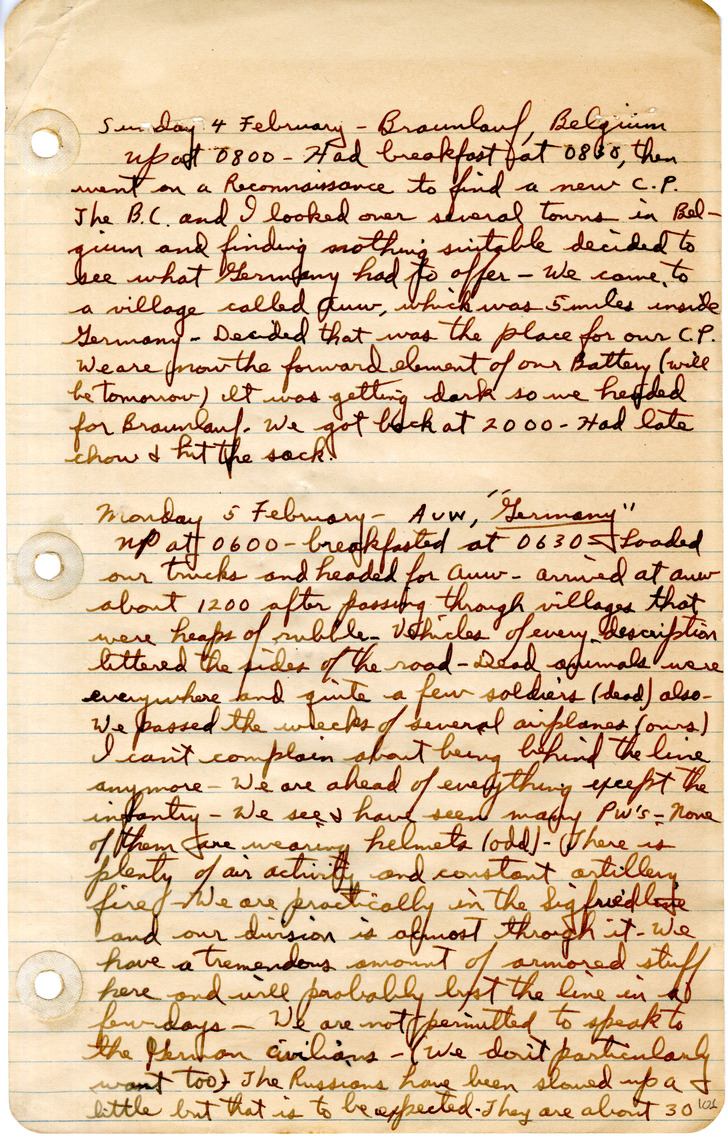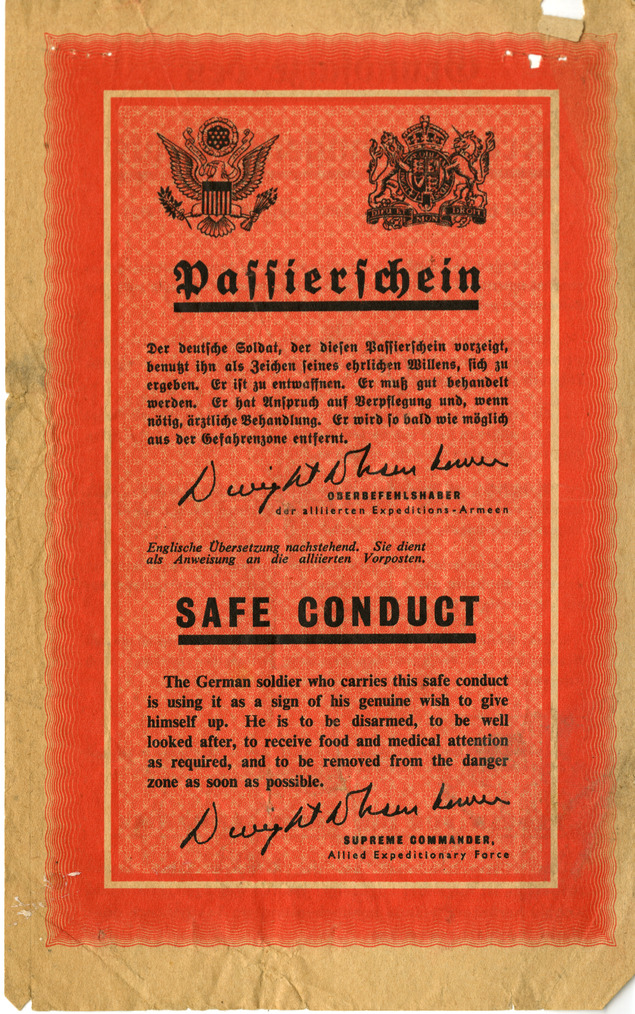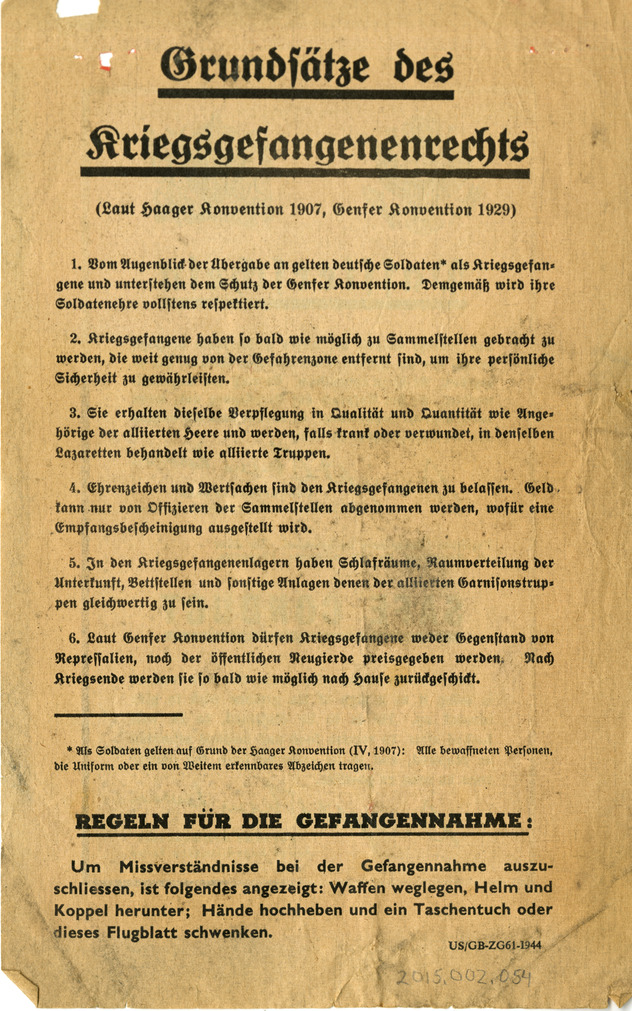Saturday [Sunday], 4 February [1945] Braunlauf, Belgium
Up at 0800. Had breakfast at 0830, then went on a Reconnaissance to find a new C. P. The B.C. and I looked over several towns in Belgium and finding nothing suitable decided to see what Germany had to offer. We came to a village called Auw, which was 5 miles inside Germany.1Auw bei Prum is a municipality within the district of Bitburg-Prum, in the Rhineland-Palatinate region of western Germany. It was used primarily as a holding point, particularly in the time leading up to and following the Battle of the Bulge, due to the fact that it is in close proximity to the border of Belgium and Germany. Decided that was the place for our C.P. We are now the forward element of our Battery (will be tomorrow). It was getting dark so we headed for Braunlauf. We got back at 2000. Had late chow and hit the sack.
Monday, 5 February [1945] Auw, “Germany”
Up at 0600. Breakfasted at 0630. Loaded our trucks and headed for Auw. Arrived at Auw about 1200 after passing through villages that were heaps of rubble. Vehicles of every description littered the sides of the road. Dead animals were everywhere and quite a few soldiers (dead) also. We passed the wrecks of several airplanes (ours). I can’t complain about being behind the line anymore. We are ahead of everything except the infantry. We see and have seen many PW’s. None of them are wearing helmets (odd). There is plenty of air activity and constant artillery fire. We are practically in the Sigfried line and our division is almost through it.2The Siegfried Line or the “Westwall” was a German defensive line along the borders of the Netherlands, Belgium, Luxembourg, France, and Switzerland. The defensive system was created originally as part of the Hindenburg Line during World War I, but was extended and added to during World War II. The Germans relied heavily on “dragons teeth” which were large, triangular concrete chunks used to derail tanks, large ditches, minefields, and anti-tank barriers which were all placed strategically along the Siegfried Line. Goetz goes into detail about the appearance of the Siegfried line in his February 21 diary entry. Goetz also included a 7-page typescript marked “Secret”, re: “Siegfried Line” with his diary entry from February 16, 1945. See Appendix, Insert 38. Charles MacDonald, The Siegfried Line Campaign (Washington D.C.: 1990) pp. 3-14. We have a tremendous amount of armored stuff here and will probably bust the line in a few days. We are not permitted to speak to the German civilians. (We don’t particularly want too.) The Russians have been slowed up a little but that is to be expected. They are about 30 [continued on next page]


